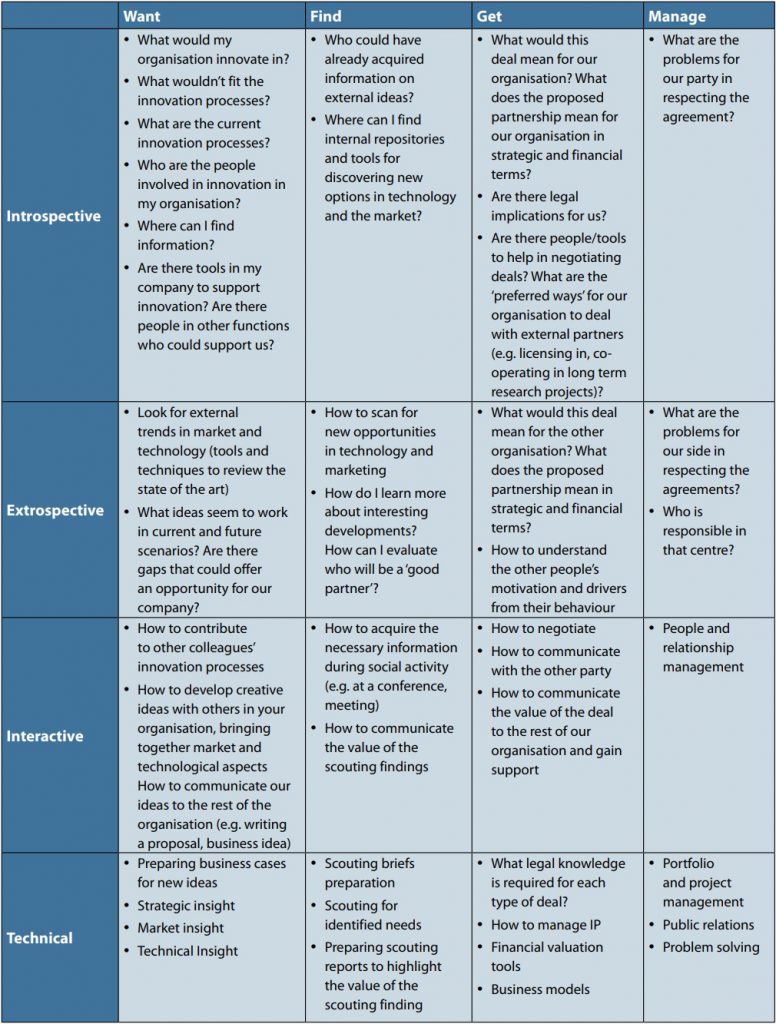Implementing Open Innovation within an organisation requires a number of enablers for success. Dr Letizia Mortara et al in How to implement open innovation: Lessons from studying large multinational companies (by Letizia Mortara, Johann Jakob Napp, Imke Slacik and Tim Minshall) identified four of the most important enablers as culture, procedures, motivation and skills.
Picking up on the last of these, the report identified around forty specific skills that need to be present within an OI team These skills cover the four stages of OI – Want, Find, Get, Manage – and fall into four categories which the authors termed introspective, extrospective, interactive and technical:
- Introspective skills enable organisations to assess internal gaps and opportunities
- Extrospective skills allow companies to review external capabilities and opportunities and to understand the viewpoint of other organisations
- Interactive skills are communication skills that convey the value of any relationship with the external world to both internal and external participants
- Technical skills include all the technological, marketing, financial, commercial, management and business skills and tools needed to support the three categories above.
Working with the members of the IfM’s Open Innovation Forum I was keen to understand where the most pressing skills gaps are. There are clearly two elements to this question: ‘Which skills are most important for success’ and ‘Which skills represent gaps’ so we surveyed the 19 member companies to establish their views, and ranked the priority skills gaps – those that were both highly important and scarce. The ‘Top 10’ make very interesting reading (see diagram):
What strikes me as most interesting is the predominance of the ‘Get’ phase in the priority skills gaps, with 6 out of 10 associated with the process of actually ‘making the deal’. This perhaps demonstrates the growing maturity of Open Innovation within this group (perhaps not surprising as the OI Forum is now in its eighth year), as activity naturally translates from the Want and Find Phases into Get. Certainly, earlier discussions in the Forum had focussed significantly on defining and communicating OI Wants.
It is also notable that four of these Top Ten are ‘Extrospective Skills’; that is they concern the need to understand the environment outside of the business, and how actions relate to external stakeholders. This is perhaps to be expected, as these outwards-facing skills represent an extension to those more typically associated with a more traditional or closed innovation approach.
It would be interesting to hear feedback from other organisations at different stages of maturity in their OI journeys to see if these findings are borne out in a wider sample. If you would be interested in undertaking the survey (on an anonymous basis) then do get in touch.
Post by Dominic Oughton




